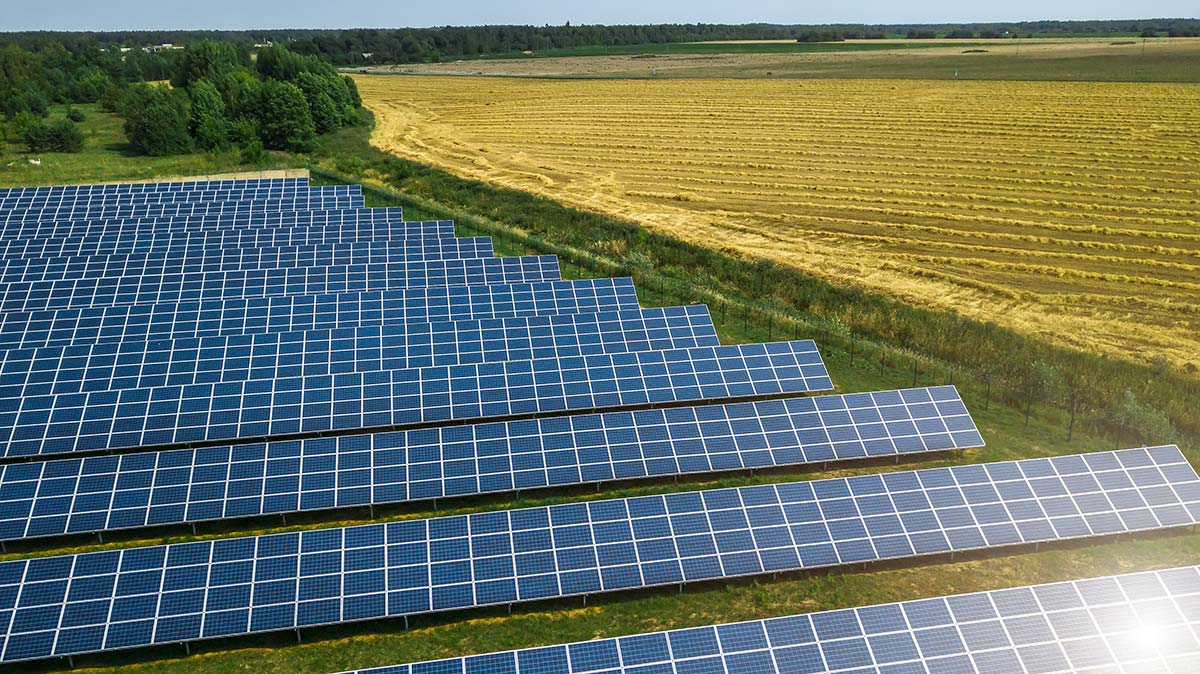The community solar market in the United States will add at least 7 GWdc in existing markets over the next five years, according to a recent report by Wood Mackenzie and the Coalition for Community Solar Access (CCSA).
“There continue to be significant tailwinds for the community solar industry as legislators in existing and new states look to community solar as a way to achieve energy policy goals,” said Jeff Cramer, CEO of CCSA. “The numbers released by Wood Mackenzie represent a conservative forecast of what’s in the pipeline for the next few years. We call on all federal and state policymakers to help remove the barriers and incentivize deployment of community solar to cut energy costs and give more people access to these programs.”
With the addition of new community solar markets including New Mexico and Delaware, Wood Mackenzie has increased its 2022-2026 forecast by 477 MW direct current (MWdc), an 11% increase compared to previous forecasts and extended its outlook to 2027. Additionally state-level programs have been expanded and rules updated, giving rise to stronger markets. Illinois and New York, for example, are forecast to see the greatest state-level changes. New York is projected to continue to be the leading community solar market, with 1.3 GWdc coming online between 2022 to 2027. Other states with pending legislation include California, Michigan, Ohio, Pennsylvania, and Wisconsin.

“The community solar industry is a growing solar segment within the US, with several proposed new programs pending in state legislatures. Since the start of Q2 2022, 4.4 GWdchas been installed nationally and we expect to see more growth over the next five years as legacy markets expand their community solar programs and new states adopt community solar programs,” said Rachel Goldstein, US solar research analyst for Wood Mackenzie.
Wood Mackenzie and CCSA collected data on customer acquisition costs for the US community solar market and found that costs to acquire large customers are lower, but more variable, on a per watt basis than acquisition costs for residential customers.
“Customer acquisition data shows that cost per customer is inversely correlated with cost per kilowatt subscribed. Anchor tenants like Municipal or Large Commercial customers are costly to acquire but subscribe to a large share of projects, so costs per kilowatt are lower,” Goldstein said.
Data from surveys for low- and moderate-income (LMI) customer acquisition costs is limited but shows that these costs are slightly higher than for non-LMI customers. Developers report that directly-billed LMI customers can be significantly harder and more expensive to subscribe than residential customers.
Report findings also highlighted that community solar-plus-storage can provide grid flexibility, but regulatory models do not currently recognize how these projects can manage load.
“As community solar becomes an increasing share of non-residential projects, developers are contending with high grid upgrade costs to manage this new load on the distribution end of the grid. Community solar-plus-storage could help manage this load and provide grid flexibility, but so far, its scope is limited to a few states, and current rules do not necessarily value storage for its grid resilience capabilities,” said Goldstein.
Community solar is on the upswing in about a third of the states. Community solar programs have steadily been on the rise in Massachusetts in recent years. A comprehensive guide run by the state’s Clean Energy Center can be found here. While New York is an established leader in community solar in the United States, hitting the milestone of 1 GW of cumulative installations earlier this year, the state’s Value of Distributed Energy Resources program will help co-locate community solar with storage.
In New Mexico, the Public Regulation Commission (PRC) formally adopted rules in June 2022 to implement a community solar program in the state. While Delaware approved community solar back in 2010, it saw little growth until 2021 when Governor Carney has signed into law a bill that looks to expand access to community solar projects, while also reducing some of the barriers blocking project siting and completion. And in California, new regulatory proposals could help the state contend with potential new net metering rules while providing financial advantages for community solar-plus-storage projects. The Biden Administration wants community solar to reach 5 million households by 2025 and create $1 billion in energy bill savings.
This content is protected by copyright and may not be reused. If you want to cooperate with us and would like to reuse some of our content, please contact: editors@pv-magazine.com.









By submitting this form you agree to pv magazine using your data for the purposes of publishing your comment.
Your personal data will only be disclosed or otherwise transmitted to third parties for the purposes of spam filtering or if this is necessary for technical maintenance of the website. Any other transfer to third parties will not take place unless this is justified on the basis of applicable data protection regulations or if pv magazine is legally obliged to do so.
You may revoke this consent at any time with effect for the future, in which case your personal data will be deleted immediately. Otherwise, your data will be deleted if pv magazine has processed your request or the purpose of data storage is fulfilled.
Further information on data privacy can be found in our Data Protection Policy.